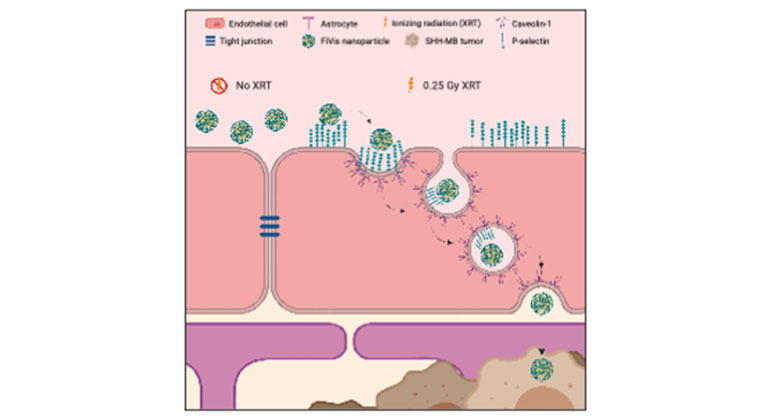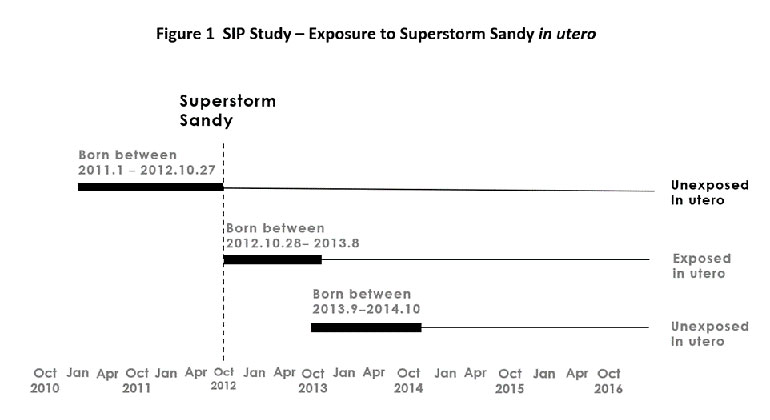Growing Number of Children in New York State Suffering from Chronic Health Problems Tied to Environmental Causes
Researchers at Mount Sinai call for elected officials to create statewide network of Centers of Excellence in Children’s Environmental Health.
While the children of New York are living longer, healthier lives than those of generations past, an increasing number of the youngest, most vulnerable New Yorkers suffer from a wide array of chronic diseases caused and worsened by environmental exposures to hazardous materials such as toxic chemicals, according to a landmark report released by the Children's Environmental Health Center at Mount Sinai. The report, titled "New York's Children and The Environment," details the growing prevalence of environmentally-linked chronic illnesses, including asthma, developmental disorders such as ADHD, cancer and obesity among the state's estimated 4.3 million children. Among other recommendations, the authors call on New York's elected officials to establish a network of Centers of Excellence in Children's Environmental Health, modeled on one that has been in operation at Mount Sinai for a decade. It also calls on New Yorkers to support legislation, pending in the New York State Assembly, which would secure funding for such a network.
The team that prepared the report was led by Philip J. Landrigan, MD, MSc, FAAP, Ethel H. Wise Professor and Chairman of the Department of Preventive Medicine at Mount Sinai Hospital, and Professor of Pediatrics and Dean for Global Health at the Icahn School of Medicine at Mount Sinai. "A growing body of evidence shows that chronic medical conditions such as asthma, cancer and obesity, all of which lessen the quality of life for our children and for their families, and which cost our state's healthcare system billions of dollars annually, are related to environmental health threats – many of which could be identified and diagnosed if only our pediatricians had the right resources in place," said Dr. Landrigan. "At Mount Sinai, we have demonstrated an easily replicable model to help lessen the burden of disease through comprehensive patient education, prevention, treatment and continual research. Today we call on our elected leaders and government officials to do what's right for young New Yorkers and pass legislation, currently stalled in the state Assembly, which would help fund and establish a statewide network of children's environmental health centers."
The Mount Sinai report also found that fewer than 20 percent of pediatricians surveyed statewide have been trained to suspect the environment as a cause of disease in children – and that most healthcare providers have nowhere to refer pediatric patients suspected to have been made ill by environmental exposures. Dr. Landrigan observes that, "The statewide network of Centers of Excellence in Children's Environmental Health will meet these serious needs."
About the proposed Centers of Excellence in Children's Environmental Health:
Modeled after the Children's Environmental Health Center at Mount Sinai, the proposed Centers of Excellence would provide expert diagnosis and treatment for children across New York who have sustained toxic exposures in the environment, or whom are suffering from diseases suspected to be of environmental origin. These Centers would each support a team of pediatricians, nurses, social workers and health educators providing a range a of services, including evidence-based guidance on questions pertaining to environmental factors and children's health; educational outreach to the community; timely messaging on acute health events; and collaboration on community-level issues involving multiple stakeholders.
Legislation to provide financial support for the establishment of these Centers was introduced in the New York State legislature by its primary sponsor, Assembly Member Robert K. Sweeney of Long Island, and lead co-sponsor Richard N. Gottfried, along with 11 other co-sponsors. The bill, AO 7885, was referred to the Assembly's Ways and Means Committee in June, 2013, where it awaits further action.
Why Action Is Needed Now
Children in New York today are at risk of exposure to more than 80,000 synthetic and toxic chemicals – the great majority of which have never been tested for safety. Most of these are new chemicals that did not exist 50 years ago, and information of possible health effects or developmental toxicity to infants and children is not even available for up to 80 percent of the most widely-manufactured chemicals.
The Centers for Disease Control and Prevention (CDC) finds measurable levels of scores of new synthetic chemicals in the bodies of virtually all Americans.
Examples of chronic illnesses tied to environmental causes affecting children in New York State include:
• ASTHMA, which has tripled in the past three decades and become the leading cause of emergency room visits, hospitalizations and school absenteeism. It affects 250,000 New York children and is especially common among minority children. Air pollutants, mold and cigarette smoke all contribute to childhood asthma.
• BIRTH DEFECTS, now the leading cause of infant death. Certain birth defects, such as hypospadias, have doubled in frequency.
• DEVELOPMENTAL DISORDERS, such as ADHD, dyslexia and learning disabilities affect one of every six American children. Autism has increased sharply in prevalence and now afflicts one child in 88.
• PRIMARY BRAIN CANCER among children has increased in incidence by nearly 40% from 1975 to 2004, according to the National Cancer Institute.
• CHILDHOOD LEUKEMIA has increased in incidence by over 40%. Benzene, other chemical solvents and pesticides are linked.
• CHILDHOOD OBESITY has nearly quadrupled in the past ten years, and its sequel, Type 2 diabetes -- previously unknown among children – has become epidemic.
• LEAD POISONING affects more than 2,200 children in New York State each year. Even at low levels, lead causes brain damage with loss of intelligence, disruption of behavior and shortened attention span.
According to the World Health Organization, environmental exposures are responsible for 35% of all childhood disease and deaths worldwide. Indoor and outdoor air pollution are now established as causes of asthma. Childhood cancer is linked to solvents, pesticides, and radiation.
The US National Academy of Sciences has determined that environmental factors contribute to 28% of developmental disorders. The urban-built environment and the modern food environment are important causes of obesity and diabetes.
Diseases caused by toxic chemicals impose great economic burdens on families, schools, communities, health care providers and society. A recent analysis estimates that the costs of disease of environmental origin in New York's children amount to $4.35 billion each year. These costs fall on the families of sick children and also on New York's taxpayers by unnecessarily increasing the annual Medicaid budget and the budgets for special education and other programs for children who have been damaged by exposures in the environment.
About the Mount Sinai Health System
Mount Sinai Health System is one of the largest academic medical systems in the New York metro area, with more than 43,000 employees working across eight hospitals, over 400 outpatient practices, nearly 300 labs, a school of nursing, and a leading school of medicine and graduate education. Mount Sinai advances health for all people, everywhere, by taking on the most complex health care challenges of our time — discovering and applying new scientific learning and knowledge; developing safer, more effective treatments; educating the next generation of medical leaders and innovators; and supporting local communities by delivering high-quality care to all who need it.
Through the integration of its hospitals, labs, and schools, Mount Sinai offers comprehensive health care solutions from birth through geriatrics, leveraging innovative approaches such as artificial intelligence and informatics while keeping patients’ medical and emotional needs at the center of all treatment. The Health System includes approximately 7,300 primary and specialty care physicians; 13 joint-venture outpatient surgery centers throughout the five boroughs of New York City, Westchester, Long Island, and Florida; and more than 30 affiliated community health centers. We are consistently ranked by U.S. News & World Report's Best Hospitals, receiving high "Honor Roll" status, and are highly ranked: No. 1 in Geriatrics and top 20 in Cardiology/Heart Surgery, Diabetes/Endocrinology, Gastroenterology/GI Surgery, Neurology/Neurosurgery, Orthopedics, Pulmonology/Lung Surgery, Rehabilitation, and Urology. New York Eye and Ear Infirmary of Mount Sinai is ranked No. 12 in Ophthalmology. U.S. News & World Report’s “Best Children’s Hospitals” ranks Mount Sinai Kravis Children's Hospital among the country’s best in several pediatric specialties.
For more information, visit https://www.mountsinai.org or find Mount Sinai on Facebook, Twitter and YouTube.

Scientists Develop Novel Approach to Enhance Drug Delivery for Brain Tumors in Children
Mar 02, 2023 View All Press Releases